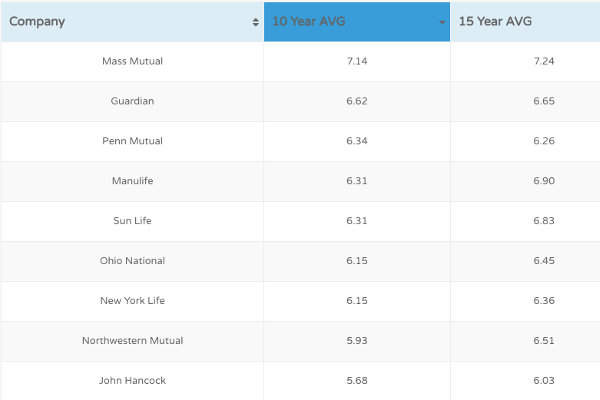When it comes to whole life insurance policies, understanding the difference between direct recognition and indirect recognition is essential. These two methods are used by insurance companies to determine how policy loans affect your policy's dividends. This blog post will delve into the differences between direct and indirect recognition, how they affect your whole life insurance policy, and which method may be better suited for your unique situation.
In most cases, the company will apply a lower dividend rate to the portion of the cash value that has been loaned, while the portion not used as collateral for the loan will continue to receive the full dividend rate. The main idea behind direct recognition is that the insurance company is compensating for the lost investment opportunity resulting from the loan by paying lower dividends.
While the dividend rate remains unchanged under indirect recognition, the insurance company still charges interest on the policy loan. The interest charged on the loan typically offsets the additional dividends paid, resulting in a more balanced financial outcome for both the policyholder and the insurance company.
However, it's essential to remember that the performance of your policy will also depend on other factors, such as the financial strength and investment performance of the insurance company.
Direct recognition may be more suitable for policyholders who do not anticipate using policy loans or who prefer the stability of a guaranteed dividend rate for the unloaned portion of their cash value.
It's also essential to work with a knowledgeable and experienced financial professional who can help guide you through the decision-making process and ensure that you choose the whole life insurance policy that best suits your unique needs and goals.
In conclusion, understanding the difference between direct and indirect recognition is critical when selecting a whole life insurance policy. By considering the impact of each method on your policy's performance and flexibility, you can make a more informed decision and choose the policy that best aligns with your financial strategy.
What is Whole Life Insurance?
Whole life insurance is a type of permanent life insurance that provides coverage for the entire life of the insured individual. In addition to the death benefit, whole life insurance policies also accumulate cash value, which can be accessed through policy loans or withdrawals. The cash value grows over time, primarily through the payment of dividends by the insurance company.Policy Loans Explained
Policy loans are essentially a way to borrow money from your whole life insurance policy's cash value. Policyholders can take out loans against the cash value for various reasons, such as making a significant purchase, paying for college tuition, or covering unexpected expenses. The interest on these loans is typically much lower than traditional loans, making them an attractive option for policyholders.Direct Recognition vs. Indirect Recognition
Direct Recognition
Direct recognition is a method used by insurance companies to adjust the dividends paid on a whole life insurance policy when the policyholder has taken out a loan against the cash value. Under direct recognition, the insurance company will "recognize" the loan and adjust the dividend rate accordingly.In most cases, the company will apply a lower dividend rate to the portion of the cash value that has been loaned, while the portion not used as collateral for the loan will continue to receive the full dividend rate. The main idea behind direct recognition is that the insurance company is compensating for the lost investment opportunity resulting from the loan by paying lower dividends.
Understand direct vs. indirect recognition & protect your financial future with the right life insurance
Click below to get Quote NowGet Me A QuoteIndirect Recognition
Indirect recognition, on the other hand, does not adjust the dividend rate based on policy loans. Instead, the insurance company continues to pay the same dividend rate on the entire cash value, regardless of whether a loan has been taken out.While the dividend rate remains unchanged under indirect recognition, the insurance company still charges interest on the policy loan. The interest charged on the loan typically offsets the additional dividends paid, resulting in a more balanced financial outcome for both the policyholder and the insurance company.
How Direct and Indirect Recognition Affect Your Whole Life Insurance Policy
Policy Performance
The primary difference between direct and indirect recognition lies in how they impact the performance of your whole life insurance policy. With direct recognition, the dividend rate adjustment may result in a lower overall return on your cash value if you take out a policy loan. Conversely, with indirect recognition, the dividend rate remains consistent, regardless of whether you have a loan, potentially leading to higher overall returns.However, it's essential to remember that the performance of your policy will also depend on other factors, such as the financial strength and investment performance of the insurance company.
Flexibility
When it comes to policy loans, indirect recognition offers more flexibility, as the dividend rate remains unchanged even when you take out a loan. This makes indirect recognition a more attractive option for those who plan on utilizing policy loans as part of their financial strategy.Direct recognition may be more suitable for policyholders who do not anticipate using policy loans or who prefer the stability of a guaranteed dividend rate for the unloaned portion of their cash value.
Which Method is Better for Your Situation?
There is no one-size-fits-all answer when it comes to choosing between direct and indirect recognition, as each method offers different benefits depending on your financial goals and needs. Before making a decision, it's crucial to carefully weigh the pros and cons of each method and consider how they align with your long-term financial strategy.It's also essential to work with a knowledgeable and experienced financial professional who can help guide you through the decision-making process and ensure that you choose the whole life insurance policy that best suits your unique needs and goals.
In conclusion, understanding the difference between direct and indirect recognition is critical when selecting a whole life insurance policy. By considering the impact of each method on your policy's performance and flexibility, you can make a more informed decision and choose the policy that best aligns with your financial strategy.




